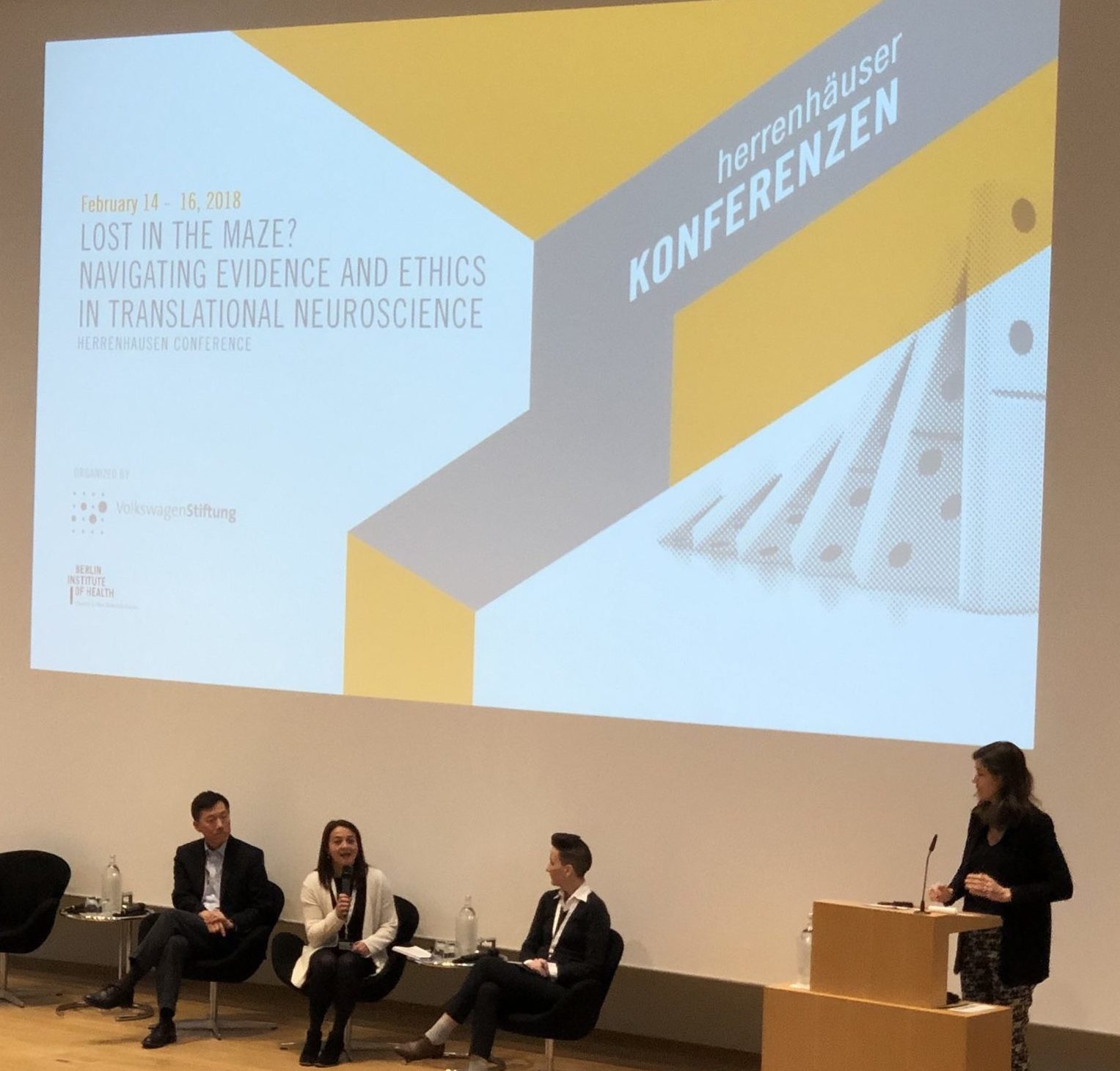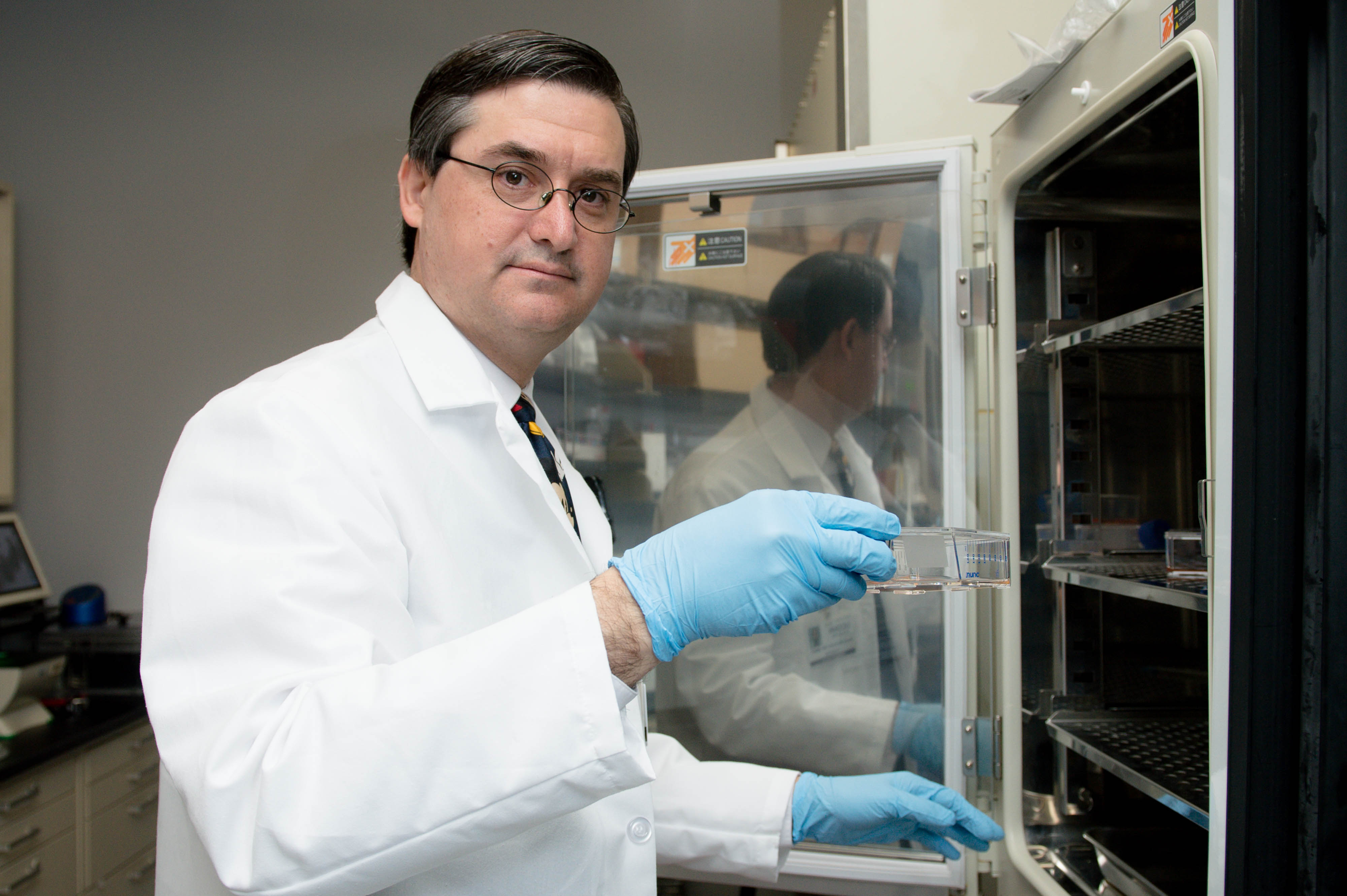By Katherine Cowan (@Katherine_JLA)

Earlier this year I was invited to speak on a panel at a conference with an interesting title: Lost in the Maze? Navigating Evidence and Ethics in Translational Neuroscience. I’m not a scientist, nor an ethicist. It sounded terrifying. But my panel title was more familiar territory to me: Public and Patient Perceptions of Research. So I said yes and made my way to Hanover.
I was asked to speak about a UK-based initiative that I’ve been involved in developing for over 10 years: the James Lind Alliance. The JLA provides a framework for involving patients, carers and clinicians in setting priorities for research. It’s about asking the end users of research what they want, and acknowledging that this can be different from what researchers and industry are interested in. Since 2004, JLA Priority Setting Partnerships have identified patient and clinician research priorities in over 60 conditions internationally.
Over at the conference, I was surrounded – perhaps for the first time in my life – by preclinical researchers and clinical ethicists. It was a dynamic, passionate and inspiring group. While my panel drew an interested crowd, it was clear that this is a nascent area for preclinical work. I wondered if the lessons learned in clinical research were relevant.
Patient involvement in clinical research: increasingly mainstream

JLA Partnerships tend to identify priorities for clinical research. The JLA is supported by the National Institute for Health Research and its programmes have funded research addressing a range of patient priorities. However, this isn’t the only way in which patients are increasingly involved in the world of clinical research. There is value in involving the end user of research to make sure that the research which is done is relevant and acceptable – this can help reduce waste. Patient input can help researchers maximise the recruitment and retention of participants in their studies. They can advise on how to convey findings to the patient community. There is room for patient involvement at every stage of the research cycle.
But isn’t preclinical research too far removed/complicated/sciencey for patient involvement?
I know there are researchers out there who would answer that with a resounding ‘no’. I certainly met people at the conference who were keen on the idea but not sure where to start. Some researchers may see all this as tokenism and a waste of time. I understand why the notion of involving patients in preclinical research is challenging. Enabling effective patient involvement requires time, resource, flexibility and expertise. It therefore needs to be worthwhile when brought into complex, costly research projects. While it’s easy to see what a patient can contribute to the study of an actual intervention, it may require more creative thinking to work out what they can offer to a laboratory setting.
Are you already doing this?
 There are people championing the potential for patient involvement in basic science. Through a JLA Partnership, I know one clinician-researcher who has been involving patients in his preclinical studies. Dr David Weinstein is a US-based researcher who has just had FDA approval for the first human gene therapy trial for Glycogen Storage Disease (GSD) Type Ia, a rare genetic childhood disorder. For many years, Dr Weinstein has carried out his preclinical work in this area using animal models. During that time, he involved patients. He created on his team a Patient Advocate role – someone with the disease who would have oversight of his work and ensure the best interests of the patient remained at its heart. He arranged patient visits to his laboratory to help the patients understand the work he was doing, and to understand their perceptions of the research and how best to communicate about it. Part of Dr Weinstein’s motivation was to be accountable and transparent: “We wanted to keep things out in the open, to help the GSD community feel part of the research, to feel invested and empowered.” He found that being open with patients about his use of animal models helped avoid controversies, inviting them to visit the research dogs to see how they were being treated.
There are people championing the potential for patient involvement in basic science. Through a JLA Partnership, I know one clinician-researcher who has been involving patients in his preclinical studies. Dr David Weinstein is a US-based researcher who has just had FDA approval for the first human gene therapy trial for Glycogen Storage Disease (GSD) Type Ia, a rare genetic childhood disorder. For many years, Dr Weinstein has carried out his preclinical work in this area using animal models. During that time, he involved patients. He created on his team a Patient Advocate role – someone with the disease who would have oversight of his work and ensure the best interests of the patient remained at its heart. He arranged patient visits to his laboratory to help the patients understand the work he was doing, and to understand their perceptions of the research and how best to communicate about it. Part of Dr Weinstein’s motivation was to be accountable and transparent: “We wanted to keep things out in the open, to help the GSD community feel part of the research, to feel invested and empowered.” He found that being open with patients about his use of animal models helped avoid controversies, inviting them to visit the research dogs to see how they were being treated.
Dr. Weinstein also has also involved families to help define research priorities. GSD, like many rare diseases, suffers due to lack of available grant funding. In 2002, the families surprised the research team by saying that an extended release cornstarch was their priority since sleep deprivation was such a burden and risk, due to the need to administer the cornstarch every three hours to maintain the patient’s glucose concentrations. Resources were devoted to this, and an extended release cornstarch preparation was approved for treatment in 2009.
Navigating patient involvement in preclinical research: where next?
It seems to me that however far removed preclinical is from day-to-day patient experience, it is still ultimately for and about patients. There must be a role for them to play. Could patients help scientists establish if a proposed experiment will lead to clinical research that is acceptable or useful to them, that will address the things that matter to them or deliver the outcomes that they want? Would the involvement of patients in preclinical research lead to increased recruitment and retention rates for subsequent clinical trials? Is there a role for patients in helping preclinical researchers communicate more effectively with a non-scientific audience, to help them explain their work and findings to patients, the public and the media?
I don’t have the answers, but I do think there’s exciting scope here for more conversations, collaboration and innovation. Patient involvement isn’t easy and mistakes get made, but that is how lessons are learned. It just requires the preclinical research community and the patient community to come together and start talking.
Katherine Cowan is an independent Consultant and a Senior Adviser to the James Lind Alliance.
http://katherinecowan.net/
Conflicts of interest: None to declare